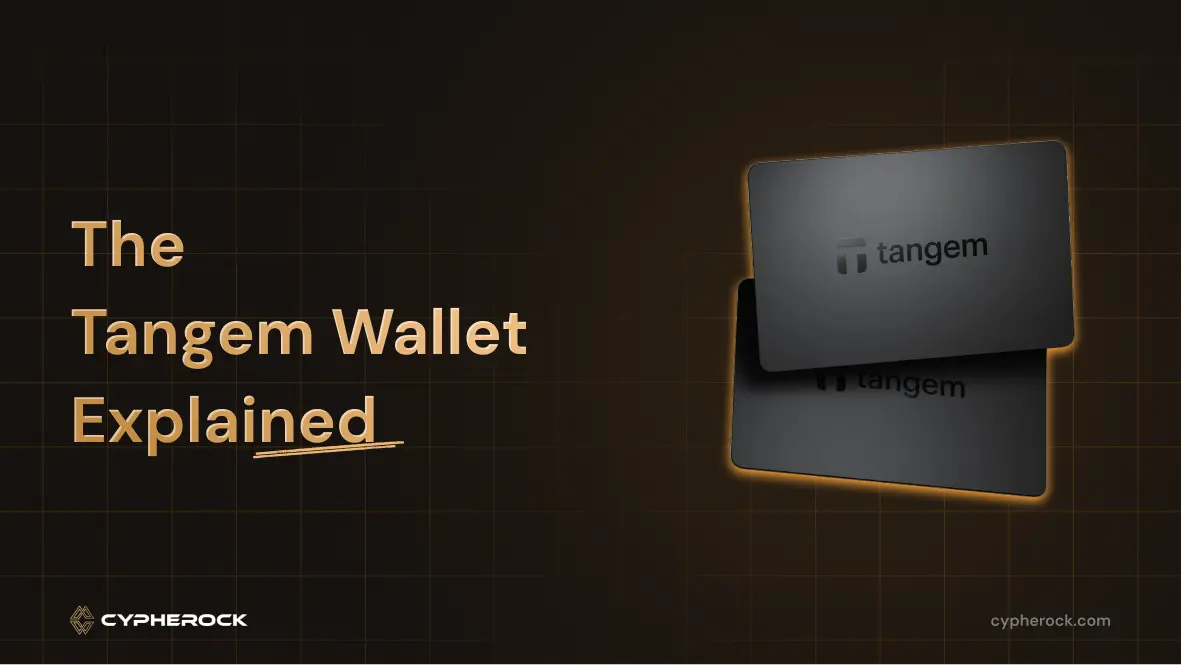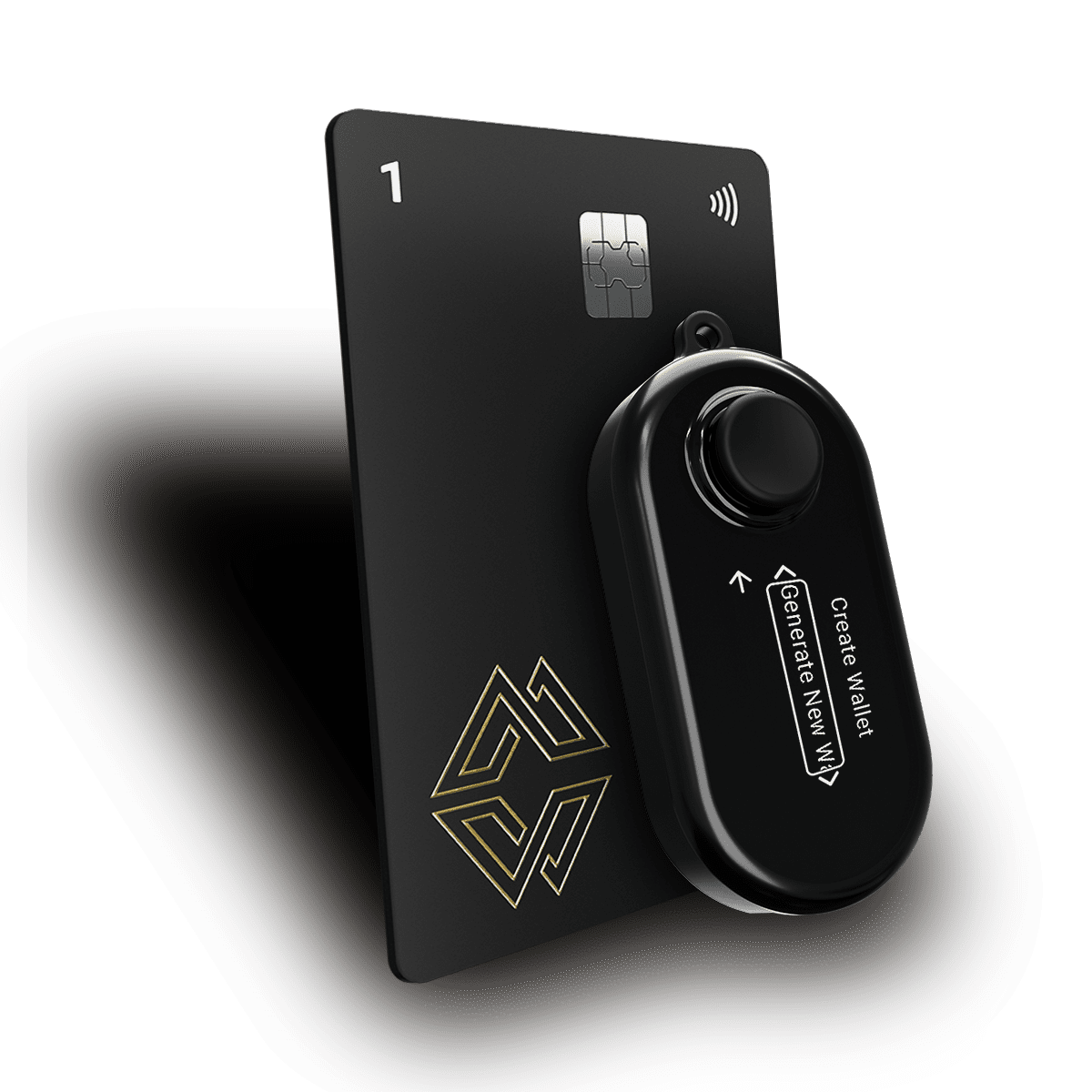

You’ve probably noticed how quickly cryptocurrency has gone mainstream. Millions of people now hold Bitcoin, Ethereum, and other coins. With that growth comes a rise in cyber threats targeting investors like you.
In the first half of 2024 alone, hackers stole around $1.38 billion in crypto. That’s almost double what was stolen in the same period in 2023. These attacks often come through phishing, exchange hacks, or even fake apps.
This is why many long-term holders now turn to hardware wallets. These devices store your private keys offline, making it nearly impossible for an online hacker to steal them.
Among hardware wallets, Tangem stands out with its card-based design. It’s simple to set up, easy to carry, and doesn’t require you to manage a seed phrase.
In this guide, you’ll learn exactly how Tangem works, who it’s best for, and when a wallet like Cypherock might be a better fit.
When you hold cryptocurrency, you hold what’s called a private key. This is the code that proves you own your coins. If someone gets your private key, they can take your crypto instantly. No bank or company can reverse that loss.
If you use a hot wallet, a wallet connected to the internet, you’re exposing that key to constant risk. Hackers can break into exchanges, trick you into revealing your details, or use malware to steal your information. Phishing sites can look exactly like real ones. Even insiders at exchanges have been caught stealing funds.
A hardware wallet stores your private keys completely offline. This means hackers can’t reach them over the internet. You have full self-custody, only you control your keys.
Tangem protects your key inside a special chip on a card. Cypherock takes it a step further by splitting your private key into five parts and storing each on a separate device. This way, no single piece contains your full key, making it useless to a thief if they steal one device.
By keeping your private key out of reach, hardware wallets make crypto storage far safer than leaving coins on an exchange.
Tangem launched in 2018 with a mission to make cold storage simple. Since then, they’ve sold over two million devices without a single hack reported.
The Tangem Wallet is different from most hardware wallets. Instead of a USB stick or touchscreen device, Tangem gives you a set of smart cards. These are the same size as a bank card and use NFC technology to connect with your phone.
When you set up Tangem, your private key is created inside the chip on the card. That key never leaves the chip. This means there’s no seed phrase for you to write down and store somewhere. You simply keep your backup cards safe.
Tangem sells these cards in sets of two or three. If you lose one, you can still access your crypto with the other cards. They also offer a Tangem Ring, a wearable version that you can carry anywhere without worrying about cables or batteries.
This approach has made Tangem popular with people who want strong security without complex setup steps.
Each Tangem card has a secure chip inside. This chip acts like a small computer. When the card is made, the chip generates a unique key pair—one public key and one private key. The private key is what controls your coins. It never leaves the chip and cannot be read, copied, or exported.
The card uses NFC (Near Field Communication) to connect with your smartphone. This is the same tech used for tap-to-pay credit cards. You just tap the card against your phone to confirm transactions.
The Tangem Ring works the same way as the cards but is built into a ceramic ring. You wear it like jewelry, and it’s just as secure. The ring contains the same secure chip technology. It’s also highly durable, resisting scratches, water, and dust.
The Tangem app is your interface for managing assets. You can use it to send and receive crypto, check balances, and connect with decentralized apps (dApps). The app doesn’t store your private key, it just communicates with the card or ring via NFC.
When you make a transaction, the app sends the details to the card or ring. The secure chip signs the transaction inside the device, and the signed transaction is sent back to the app to broadcast to the blockchain.
Security: Tangem uses an EAL6+ certified secure chip. This is one of the highest security certifications available for hardware components. Independent audits by companies like Kudelski Security have confirmed there are no backdoors. The chip is built to resist both physical and remote attacks.
Durability: Tangem devices are IP69K rated. They can withstand dust, water, and extreme temperatures between –25°C and +50°C. The chip has a 25-year minimum lifetime and is also resistant to X-rays and electrical damage.
Privacy: Tangem doesn’t require you to provide personal details. It doesn’t run servers to process transactions. All interactions happen between your device and the blockchain.
Ease of Use: Setup takes about three minutes. No cables or batteries are needed. You just tap the card or ring on your phone, set an access code, and you’re ready to go. Tangem supports over 13,000 cryptocurrencies, including Bitcoin, Ethereum, and many altcoins.
Tangem is ideal for users who want a balance between security and simplicity.
If you prefer secure storage without managing seed phrases or complex recovery steps, Tangem fits perfectly.
If you want speed and portability, Tangem is great. If you want maximum protection from every possible attack, Cypherock is hard to beat.
To use Tangem, you’ll need:
Setup steps:
Once you’re set up, you can use the app to send, receive, and manage your crypto.
Tangem’s design is secure, but some situations call for even stronger measures.
If you’re at risk of targeted theft, such as being known in the crypto community, a card-based system might not be enough. If someone steals all your cards, they could access your funds.
For nation-state level attacks or sophisticated phishing attempts, a multi-device system like Cypherock’s offers greater resilience. Even with physical access to one device, attackers can’t get your full key.
This is why some investors use both: Tangem for everyday access and Cypherock for long-term, high-value storage.
If you take crypto security seriously, a cold wallet is not optional. Hot wallets and exchanges leave your assets exposed to constant online threats.
Tangem is a strong choice if you want simple, portable, and secure storage without seed phrase management. Its card and ring options make it easy to carry and use anywhere.
Cypherock X1 offers a different kind of protection. By splitting your private key across multiple devices, it removes the single point of failure. It also gives you advanced recovery and inheritance options.
If your priority is ease of use, Tangem will serve you well. If you want uncompromising security for long-term storage, Cypherock X1 is safer.

Start securing your crypto journey today—visit Cypherock X1 to learn more.
Connect with us:
Twitter: @CypherockWallet
Telegram: Join the Community
